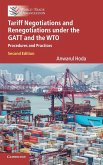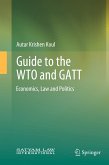The GATT and WTO dispute settlement systems have become the most frequently used international mechanisms for the settlement of trade disputes among governments. The 1994 Agreement Establishing the WTO introduced a historically unprecedented new dispute settlement procedure for conflicts involving trade in goods and services, trade-related investment measures, and intellectual property rights. This procedure provided for the compulsory jurisdiction of the WTO Dispute Settlement Body, WTO Panels, and the WTO Appellate Body. The first 18 months from the time the WTO Agreement came into force on 1 January 1995 witnessed more than 50 invocations of the new dispute settlement procedures by a large number of countries, including many from the developing world. This large response, and the proposals for further extending the scope of WTO law, suggest that the WTO dispute settlement system will continue to be the most frequently applied, worldwide systems for the legal settlement of trade disputes among governments. This book provides students, lawyers and diplomats a thought-provoking and practice-oriented analysis of the GATT/WTO dispute settlement rules, procedures, and problems. The Annexes include a useful collection of relevant texts and tables of past GATT and WTO case law.
Bitte wählen Sie Ihr Anliegen aus.
Rechnungen
Retourenschein anfordern
Bestellstatus
Storno








